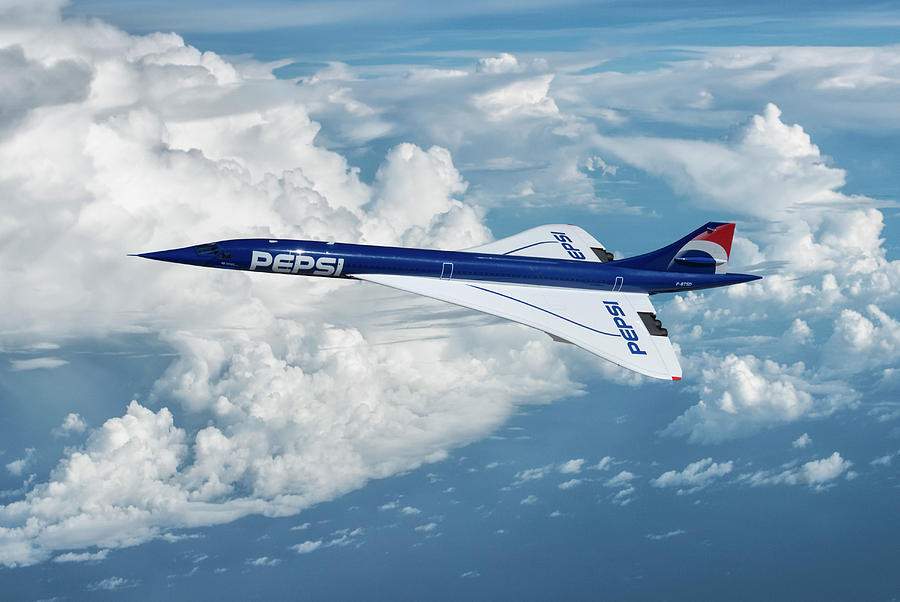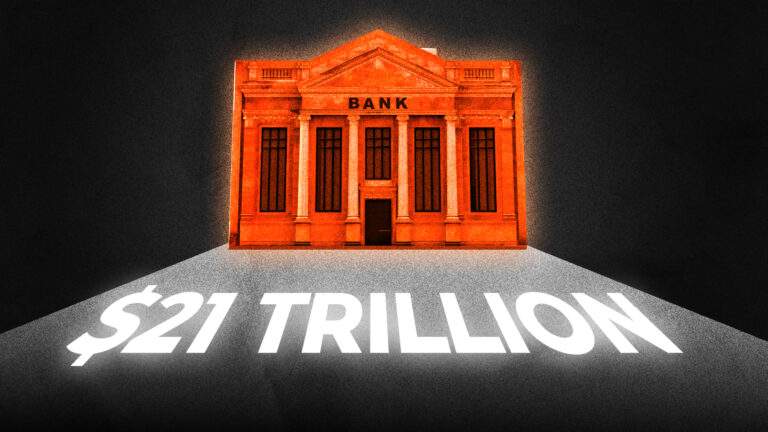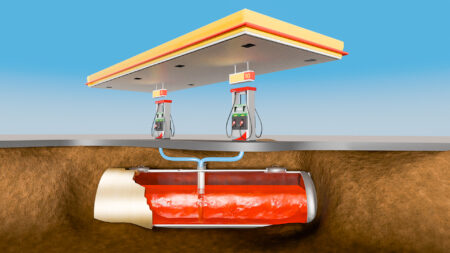On the 2nd of April 1996, global superstars Cindy Crawford, Claudia Schiffer and Andre Agassi, stood on the runway at Gatwick Airport, waiting for a plane. But they weren’t there to fly to some exotic destination, the event was the plane itself; a freshly painted, electric blue concorde, emblazoned with the Pepsi logo.
Today we’re going to look at one of the biggest marketing stunts of the 90s and see how something as simple as a paint job created a serious technical issue for this supersonic airliner.
Pepsi design change
During the mid 90’s, Pepsi had decided it was time to change their design. There was too much red on their cans which clashed with their rivals, Coca Cola. So, they rebranded to a mostly blue can and needed a big campaign to announce this change to the world. And so began ‘Project Blue’.

They struck a deal with Air France, allowing them to repaint one of the 20 concordes in existence at the time. In fact, they got one of the last concordes to be made, Sierra Delta. This particular Concorde was built in 1978 and benefitted from new construction techniques like the use of titanium rivets, which made it much lighter than other Concordes. To this day, Sierra Delta holds the record for the fastest circumnavigation of the globe, taking 31 hours 27 minutes and 49 seconds including 6 stops for fuel. With the most capable Concorde at their disposal, Pepsi set a date for their big event and got to work.
Painting the Pepsi Concorde
The new paint job was carried out in secrecy at an Air France facility in Paris, requiring over 200 litres of paint and thousands of man hours to complete. Once the last drop was dry, they quickly wrapped the aircraft in brown paper to make sure the stunt was kept secret. Since the big event was in London, they sped across the English Channel during the night, remaining undercover before being escorted straight to a hanger at Gatwick airport.

Journalists from all over the world had been invited to the hangar, being told that they would see a new ad, featuring Crawford, Schiffer and Agassi. What followed, was a very 90’s, futuristic event with supermodels arriving on motorbikes and an impressive light show.
The big reveal
What followed was the most 90’s event imaginable, a futuristic light show with supermodels arriving on motorbikes.

After the main ad was introduced, the blue concorde was wheeled into the dark hangar, through a fog of smoke machines and strobe lights. This event cost Pepsi around 5 million dollars to produce, making it the most expensive ad ever made at the time. But this wasn’t the only publicity stunt in the Project Blue campaign.
Commercials in space
Just a month after the Concorde unveiling, Pepsi became the first ever company to shoot a commercial in space. Cosmonauts onboard the Mir space station took a large replica of the new Pepsi can on a spacewalk. This ad cost Pepsi another 5 million dollars to produce. But once the ad was finished, Pepsi had changed the design of the can and the ad was never aired. We go into this and other ambitious space adverts in a previous Primal Space video.
After Concorde’s new look was unveiled, Pepsi took the plane on a promotional tour, jetting off to 10 different cities across Europe and the Middle East. However, there was one major condition. They had to reduce the speed.
Problems for Concorde
The typical cruising speed for a concorde was Mach 2.04 or 2,500 km/h. But flying at this speed generated a huge amount of heat. This was partly due to the friction of the air passing over the surface of the aircraft. But also, with supersonic aircraft, not all the air can move out of the way fast enough. This compresses the air and creates an area of high pressure in front of the nose, which heats up the plane. At full speed, the nose would get as hot as 127 degrees with the fuselage and the wings exceeding 90 degrees.
This would cause the aircraft to visibly expand by around 30 mm. Inside the cockpit, you could see this happening and a gap would open up between the flight engineer’s console and the bulkhead. On some of the retired planes, you can actually see a cap that was placed in the gap on the final flight, becoming trapped, once the metal shrank again.

This expansion is a problem in all supersonic planes. The fastest jet ever created, the Lockheed SR-71 blackbird, was built with many small parts that could each expand. This would often cause the aircraft to have fuel leaks whilst sitting on the runway.
Concorde was designed to limit surface heat as much as possible. They used a special white paint that was much more reflective than typical aircraft paint, allowing it to radiate more heat. The jet fuel played a key role in absorbing a lot of the surface heat, helping to keep the aircraft at a nominal temperature. Even with all this protection, surfaces inside the cabin became warm to the touch during a normal flight.
The solution
So, with the new dark blue colour scheme, the pilots were told that they could only pass Mach 2 for a maximum of 20 minutes. Instead, they flew at a cruising speed of Mach 1.7 for most of the flight, where the heating was less of an issue. The wings remained white since this is where the fuel tanks were located. Any change in temperature here may have altered the efficiency of the fuel and reduced its effectiveness as a heat sink.
Sierra Delta flew with the Pepsi livery for two weeks before returning to its normal service under the traditional Air France design. During its short stint as a flying billboard, it visited 10 cities and completed 14 supersonic flights.
The process of converting the aircraft into Pepsi colors likely set the company back around 1 million dollars and it’s estimated that Pepsi’s budget for the entire Project Blue campaign was over half a billion dollars.
So, was it worth it?
By the end of 1996, Coke were making almost 50% more profit than Pepsi. Even going supersonic didn’t make them fast enough to catch the world’s most popular cola. By the time Concorde ended in 2003, it was simply a glamorous way for the wealthy to travel and the quickest way for business people to get to their meeting on the other side of the world. Nowadays, the world is more connected than ever and having a business meeting over the internet is probably safer than flying at mach 2 in a tin can.













